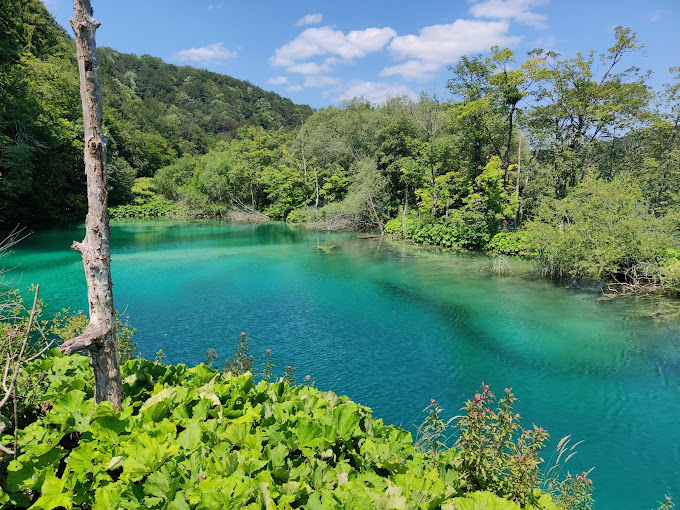Plitvice Lakes, Croatia
💧 Symphony of Water: Plitvice Lakes, Croatia
A land where turquoise waters dance over limestone cliffs and ancient forests echo with the songs of birds — Plitvice Lakes National Park is Croatia’s most enchanting natural wonder. Nestled between the Dinaric Alps and the Adriatic coast, this UNESCO World Heritage Site is a paradise of cascading lakes, wooden pathways, and magical waterfalls that seem painted by nature’s own brush.
With 16 terraced lakes and over 90 waterfalls, Plitvice is a living watercolor — and a must-visit destination for travelers seeking peace, wonder, and wild beauty.
🌊 Water in Harmony: The Terraced Lakes
The park is famed for its 16 crystal-clear lakes connected by cascading waterfalls and surrounded by lush forest.
-
Upper Lakes (Gornja Jezera): Set among dolomite hills, the upper lakes are tranquil, misty, and deeply wooded — ideal for peaceful nature walks.
-
Lower Lakes (Donja Jezera): Carved into limestone canyons, these feature dramatic cliffs and the park’s largest waterfall, Veliki Slap (78 meters tall).
-
Kozjak Lake: The largest lake, offering boat rides and panoramic views.
Thanks to high calcium carbonate levels, the water sparkles in surreal shades of blue, green, and silver — constantly changing with the light and seasons.
🌿 Walking on Water: Trails and Wooden Pathways
Plitvice is best explored on foot via a network of wooden boardwalks that skim across lake surfaces and curve along waterfalls.
-
Hiking Routes (A–K): There are 8 well-marked trails ranging from 2 to 8 hours. Each offers a different balance of lakes, falls, forest, and elevation.
-
Electric Boats & Panoramic Trains: Included in your ticket, these offer resting points and scenic rides through the park’s dreamlike landscapes.
Whether you walk or glide, every turn reveals a new sound of rushing water, a new angle of sparkling light.
🦌 Wild & Protected: Flora and Fauna
Beyond its waters, Plitvice is home to one of Europe’s most pristine ecosystems.
-
Wildlife: The park is home to bears, wolves, lynxes, and over 120 species of birds. While elusive, signs of their presence are part of the park’s mystique.
-
Flora: Expect beech, fir, and pine forests with over 50 species of orchids and rare alpine plants.
The biodiversity of the park makes it not just beautiful, but ecologically vital and strictly protected.
📸 Iconic Spots: Where to Take Your Best Shot
Every corner of Plitvice is photogenic, but don’t miss:
-
Veliki Slap: The tallest and most dramatic waterfall — best viewed from the lower lake trail.
-
Supljara Cave: A small karst cave near the lower lakes with cinematic charm.
-
The Kozjak Viewpoint: Offers a panoramic view of both upper and lower lakes — especially magical at sunrise or in autumn fog.
Tip: Visit early morning or late afternoon for fewer crowds and better light.
🛏️ Where to Stay: Lake Dreams
Though Plitvice is rural, there are excellent accommodations nearby:
-
Hotel Jezero (Inside the Park): Comfortable, convenient, and ideal for early access to trails.
-
Etno Garden Plitvica Selo: A charming guesthouse offering rustic elegance with Croatian hospitality.
-
Local B&Bs and Eco-lodges: Scattered around nearby villages like Rakovica and Grabovac — perfect for quiet nights and homecooked meals.
🍽️ Flavors of the Forest: Local Cuisine
While dining options in the park are limited, nearby towns offer rich traditional fare:
-
Peka: Meat or fish slow-cooked under a metal dome with potatoes and herbs.
-
Strukli: A baked pastry filled with cottage cheese — deliciously comforting.
-
Forest Mushrooms & Truffle Dishes: Seasonally available and locally foraged.
Pair your meal with Croatian wines or local plum brandy (šljivovica) for a true taste of the region.
📅 Best Time to Visit
Each season at Plitvice offers a distinct experience:
-
Spring (Apr–Jun): Waterfalls are strongest, wildflowers bloom, and temperatures are mild.
-
Summer (Jul–Aug): Lush greenery, clear skies — but also peak tourist season.
-
Autumn (Sep–Oct): Stunning foliage, cooler air, and fewer crowds.
-
Winter (Dec–Feb): The park turns into a frozen fairytale. Parts may close, but snow and ice transform the falls into silent sculptures.
🧳 Essential Tips for Your Visit
-
Tickets: Buy in advance from the official site — entry is timed to reduce overcrowding.
-
Getting There: 2-hour drive from Zagreb or Zadar. Buses run regularly in peak seasons.
-
Pack Smart: Waterproof shoes, reusable water bottles, layered clothing, and a camera are must-haves.
-
Respect the Rules: Swimming is not allowed in the lakes to protect the fragile ecosystem.


